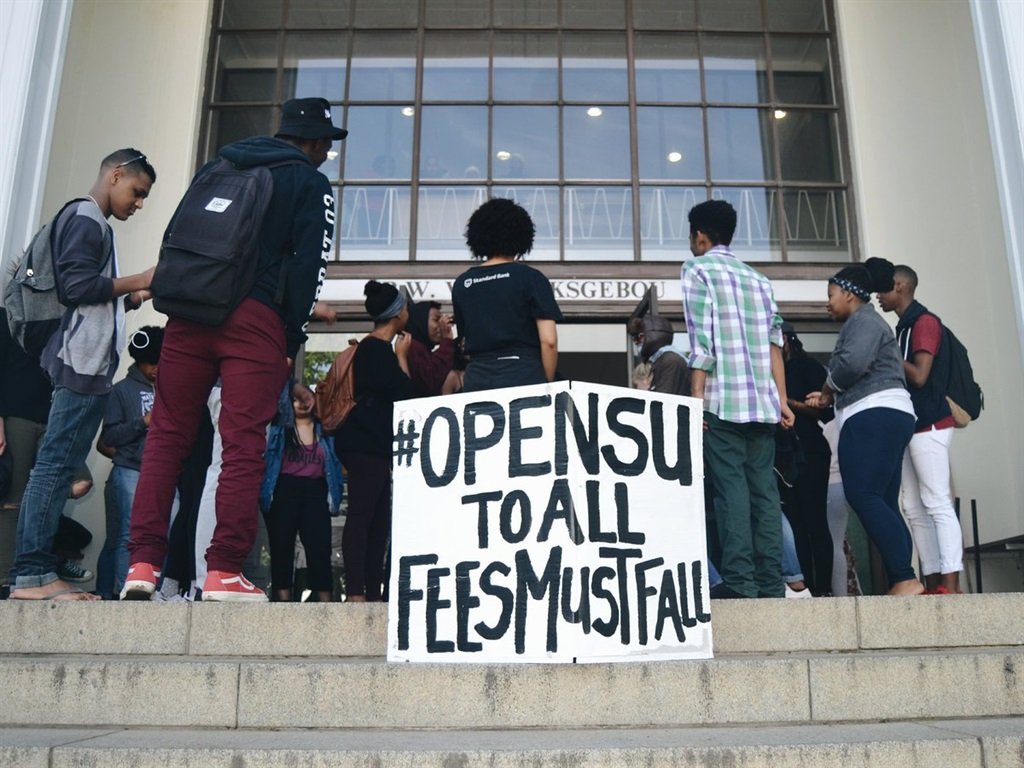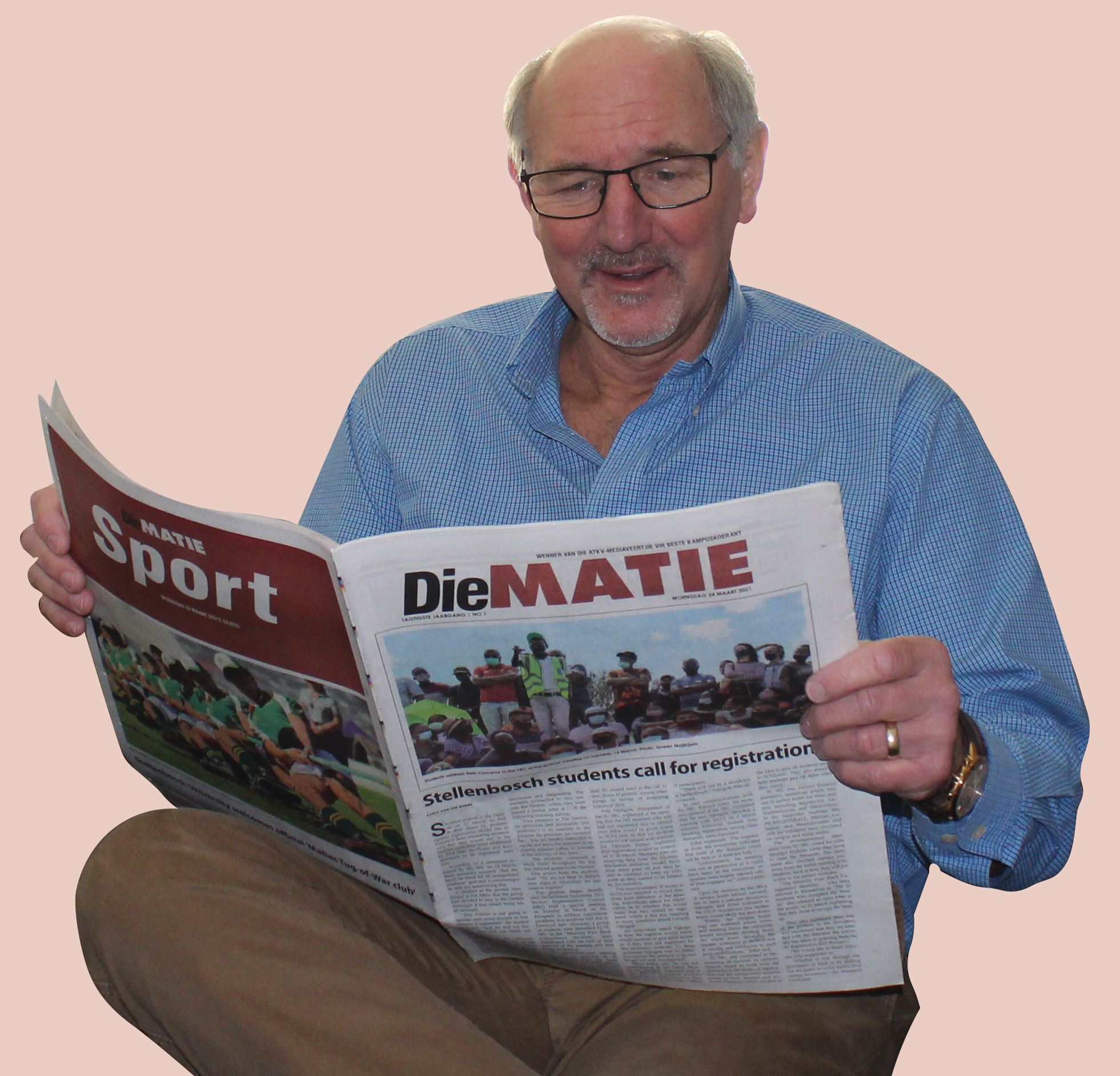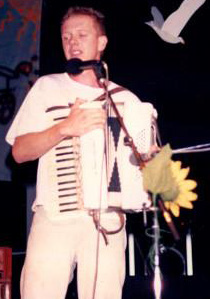BY FLAVIA DAVIDS
1985 – Anti-apartheid protest by Maties quashed by police and other students
REVEREND John Green and Stellenbosch University (SU) student Lloyd Davids, who had been granted permission by Phillip Verster, the SU Student Representative Council (SRC) chairperson at the time, led 300 SU students in peaceful anti-apartheid protest. The students and their leaders united in the singing of freedom songs and chanting in September of 1985.
Before the protest, Verster issued a warning to the student
body that the protest would not be met with any conflict as the student body “must give the students a chance to exercise their action”. However, chaos ensued when different groups of SU students attempted to block the protest.
As reported by Die Matie on 5 September 1985, approximately 60 Wilgenhof students tried to stop the protest by throwing water bombs (made from plastic bags) at the protestors. Other student groups threatened the protestors by arming themselves with batons and sticks and pelted them with eggs. Once the protest left the campus, a group of 150 Afrikaner Weerstandsbeweging (AWB) supporters
attempted to block the protestors’ path. The scene was de-escalated by plain-clothed, sjambok-wielding police officers and the protest was declared illegal. As the protest drew to a close in front of the Arts building on Ryneveld Street, the rector, Prof Mike de Vries, urged the students not to engage further with the protestors and that anyone who participated in a protest would face “immediate suspension”.
The protestors then dispersed onto the Rooiplein and held a short service, in which a statement was read and “Nkosi Sikelel’ iAfrika” was sung while other students sang “Die Stem”.
1990 – Bonfire of Die Matie papers on Rooiplein
TO express their wrath against Die Matie, 250 disgruntled SU students gathered on the Rooiplein to burn its newspapers. The protest, which also led to the pelting of Die Matie staff with eggs, was believed to have been partially motivated by the protesting students’ outrage at the publication of the article “Doop gaan voort”, an article that had an anti-initiation stance.
The head of the Prim Committee at that time, Louis du Preez, acted as spokesperson of the protesting students as well as the other members of the Prim Committee. Du Preez argued that the articles published in the student newspaper had been “based on lies” and that the publication was not performing its duty as “the independent mouthpiece for the Stellenbosch students” per its mantra.
Further claims included that the student newspaper published articles that were “negative”, “one-sided”, and even “blasphemous”.
The protest was condemned by then SU rector Prof Mike de Vries, who said that the protest was unjustified, regardless of the intensity of the emotions that led to the protest in the first place.
In May 1990, a further attack on Die Matie took place when the then deputy-editor, Tina du Toit, was fired by the SRC. In a motion of nine to six votes, it was decided that Du Toit should be fired for contravening certain rules set out in Die Matie’s code of conduct. These allegations were dismissed by the then editor, Dries Liebenberg, who claimed that Du Toit’s dismissal “came down to a blatant restriction of [Du Toit’s] freedom and that of Die Matie”.
2015 – Fees Must Fall flame lit in Matieland

THE fall of the Cecil John Rhodes statue at Rhodes University in Makhanda (formerly Grahamstown) in October 2015 sparked the national student-led protest known as the Fees Must Fall (FMF) movement.
In October 2015, SU student Jodi Williams occupied the Admin B building on Victoria Street.
As told to the Sunday newspaper City Press by accounting student Farai Mubaiwa on 25 October
2015, “[It] was an emotional stu-dent who just decided to occupy Admin B on Monday [19 October 2015]. The rest of us joined.” The occupation of the Admin B building was the first of the pro-tests in which students called for free education. In 2016, approx-imately 30 students were inter-dicted by the university after FMF protestors occupied the library in protest of the proposed 8% tuition increase for the 2017 year. The stu-dents vowed to occupy the library until they were met with Prof Wim de Villiers, the rector, to discuss free education, as well as no in-creased tuition fees. The protest was broken up by police with pepper spray, and the students were forcibly removed from the scene. A later protest in October 2016 saw the shutdown of the Arts and Social Sciences, Economic and Management Sciences, and Law buildings during the exam pe riod. A petrol bomb was thrown at the General Engineering building which did not result in any da mage to the property or injuries to the students involved.
2016 – #RedTape movement in solidarity with the voiceless victims of sexual abuse

#REDTAPE A silent protest on the Rooiplein in April 2016. Photo: Stellenbosch University
IN February and March 2016, two SU students from the Harmonie and Heemstede residences respectively were alledgedly raped in separate incidents on the main Stellenbosch campus.
News of the incidents sparked outrage in the Stellenbosch community and led to a demonstration of solidarity known as the #RedTape movement. Students were encouraged to wear tape over their mouths to show solidarity with the victims of sexual abuse and as a show of support for those who are rendered voiceless by the inhumane violation of their bodily integrity.
The protest took place on the Rooiplein for five days, and over a hundred students gathered in silent protest against sexual abuse. A petition to SU management was disseminated to the student community in which requests were made for increased campus security, panic buttons for students in addition to a designated toll-free crisis line for sexual abuse victims.
At the end of the protest, a BA (International Studies) honours student, Ashanti Kunene, recited poetry. SU’s choir, led by conductor André van der Merwe, broke the silence with a rendition of the isiXhosa gospel hymn “Indodana”.



